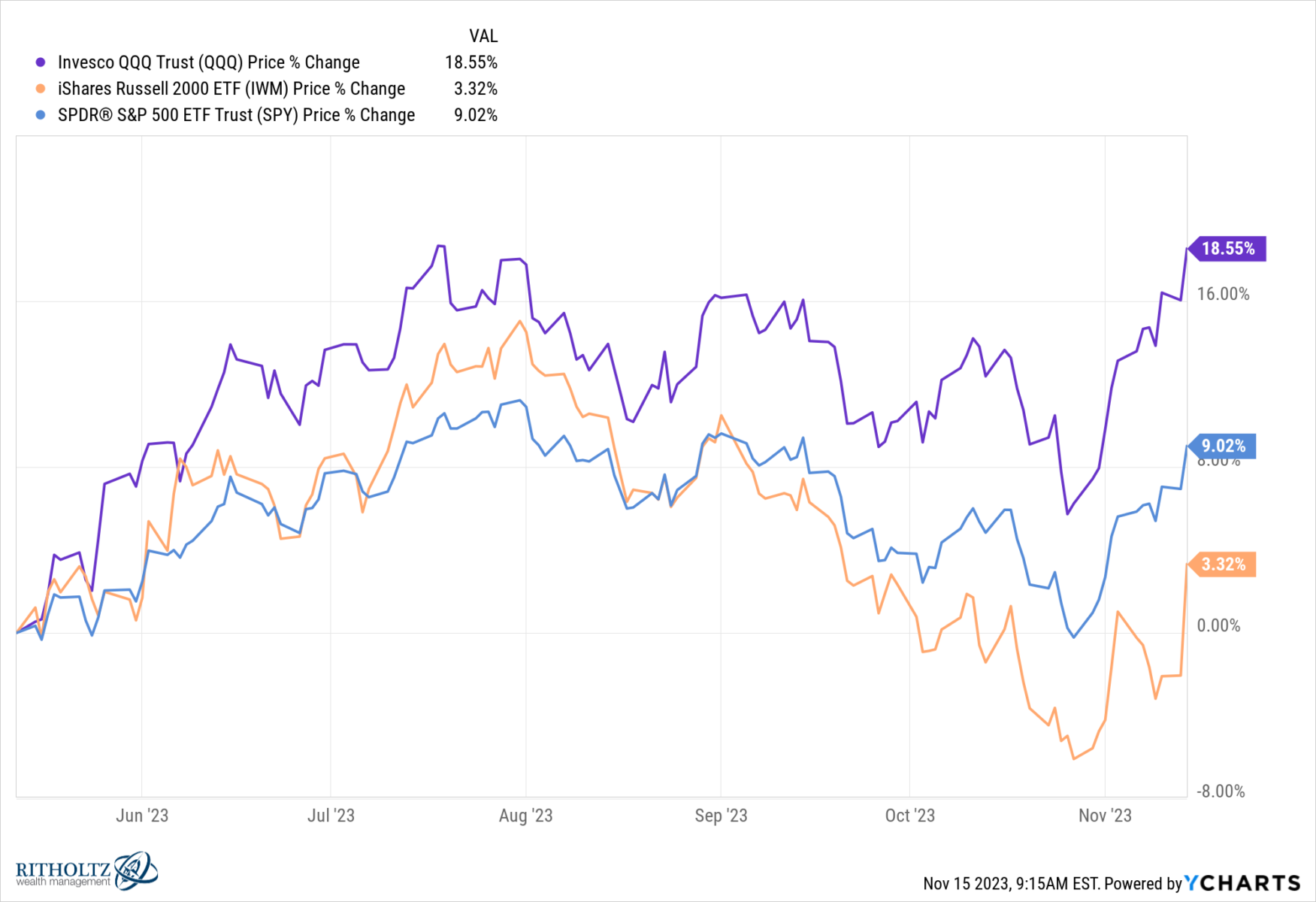Markets screamed higher yesterday after a benign CPI report showed a 0.0% monthly price increase and inflation falling to 3.2% year over year. After a big gap opening, latecomers piled in; many had been sitting on the sidelines following a challenging 2022, while others got panicked out during the 10% October drawdown. It was a classic fear-driven error, a combination of bad market timing and poor impulse control.
Following the presentation I gave on navigating financial disasters, I spoke with Jeff Hirsch of Stock Traders Almanac (video here). During our Q&A, he asked if I hated market timing and speculation. My answer surprised him: “I love speculation, adore market timing, and enjoy stock picking.”
The problem is those behaviors are so destructive to a portfolio. Merely telling people NOT to do those things is ineffective.1 We ignore the reality of human behavior, including the need for some thrills and excitement, at the peril of our portfolios.
Instead, we can deploy small hacks to thwart our own worst instincts and behaviors; by making small changes in your outlook and investment process, you can channel these behaviors into less destructive outlets. (Note: We deploy many of these solutions at RWM that take advantage of well-established principles of behavioral economics.)
Here are a few small but effective hacks you can try at home:
–Recognize Your Behavioral Risks: Start with the basic understanding that almost no one consistently beats the market net of costs and expenses; that compounding works best when it’s left uninterrupted; and that nobody knows what the future will bring. Last, recognize that markets go up and down.
Understanding these basics will at least give you some guidance as to when your behavior is putting your assets at risk.
–Understand the Basics: Investing is simple but hard: Build a core portfolio of low-cost index ETFs; diversify globally; rebalance once a year. Manage all of the above toward your financial goals and plan.
That’s the simple part; the hard part is sticking with it. (Hopefully, these hacks will help).
–Use a Core & Satellite Approach: Think of your core portfolio as a Christmas tree and any non-core satellite investments as the ornaments you hang on that tree. Meaning, the core of your portfolio should be 70 to 80% of that simple ETF portfolio described above.
The Satellites are whatever personal stink you wanna decorate that tree with: Maybe you’re a fan of venture capital or private equity; perhaps you think India is the next great economic powerhouse; AI? Sure, whatever, why not…
It really doesn’t matter what the satellites are so long as it forces you to leave your core alone long-term.2
–Cowboy Account: Set up a separate trading account with a few percent of your liquid net worth (no more than 5%). Use it for whatever degenerate speculation you want: Market timing, stock picking, option trading, Crypto, whatever. If it works out — great! If it goes to $0, oh, well! It’s only a few percent and doesn’t affect your financial plan or your standard of living.
Just so long as it scratches your junkie itch (you know you are a degenerate junkie gambler, right? We all are!) and it stops you from messing with your primary portfolio.
~~~
Good investing is boring. You can overcome that issue with these modest behavioral hacks.3
To learn more about managing behavior in the markets, listen to these podcasts with various Behavioral Economics & Psychology professors and/or read all of these discussions on behavioral finance and cognitive errors.
Previously:
How to Get Rich in the Markets (July 17, 2023)
Simple, But Hard (January 30, 2023)
How Many Bear Markets Have You Lived Through? (March 3, 2023)
How to Use Behavioral Finance in Asset Management: Part I, Part II, Part III
__________
1. Don’t drink! Eat healthy and exercise! Get enough sleep! There, now everybody is much healthier!
2. And it doesn’t overwhelm the rest on a percentage basis…
3. Note: You don’t have to do all of these, just the ones that redirect your bad behaviors.


